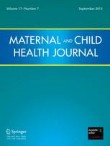Abstract
Background
Shear wave elastography (SWE) is an ultrasound technique for the noninvasive quantification of tissue stiffness. The hypoxic tumor microenvironment promotes tumor stiffness and is associated with poor prognosis in cancer. We aimed to investigate the correlation between tumor hypoxia and histologic biomarkers and tumor stiffness measured by SWE in breast cancer.
Methods
From June 2016 to January 2018, 82 women with invasive breast cancer who underwent SWE before treatment were enrolled. Average tumor elasticity (Eaverage) and tumor-to-fat elasticity ratio (Eratio) were extracted from SWE. Immunohistochemical staining of glucose transporter 1 (GLUT1) was used to assess tumor hypoxia in breast cancer tissues and automated digital image analysis was performed to assess GLUT1 activities. Spearman correlation and logistic regression analyses were performed to identify associations between GLUT1 expression and SWE values, histologic biomarkers, and molecular subtypes. The Mann–Whitney U test, t test, or Kruskal–Wallis test was used to compare SWE values and histologic features according to the GLUT1 expression (≤the median vs > median).
Results
Eaverage (r = 0.676) and Eratio (r = 0.411) correlated significantly with GLUT1 expression (both p < 0.001). Eaverage was significantly higher in cancers with estrogen receptor (ER)–, progesterone receptor (PR)–, Ki67+, and high-grade (p < 0.05). Eratio was higher in cancers with Ki67+, lymph node metastasis, and high-grade (p < 0.05). Cancers with high GLUT1 expression (>median) had higher Eaverage (mean, 85.4 kPa vs 125.5 kPa) and Eratio (mean, 11.7 vs 17.9), and more frequent ER– (21.7% vs 78.3%), PR– (26.4% vs 73.1%), Ki67+ (31.7%% vs 68.3%), human epidermal growth factor receptor 2 (HER2) + (25.0% vs 75.0%), high-grade (28.6% vs 71.4%), and HER2-overexpressing (25.0% vs 75.0%) and triple-negative (23.1% vs 76.9%) subtypes (p < 0.05). Multivariable analysis sh owed that Eaverage was independently associated with GLUT1 expression (p < 0.001).
Conclusions
Tumor stiffness on SWE is significantly correlated with tumor hypoxia as well as histologic biomarkers. In particular, Eaverage on SWE has independent prognostic significance for tumor hypoxia in the multivariable analysis and can potentially be used as a noninvasive imaging biomarker to predict prognosis and pretreatment risk stratification in breast cancer patients.






